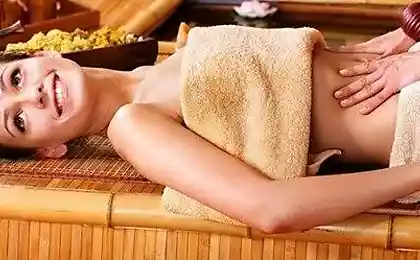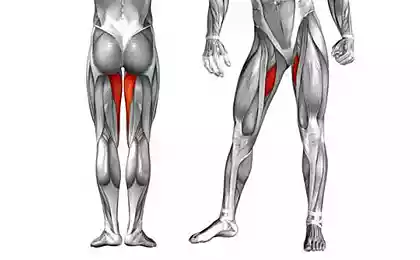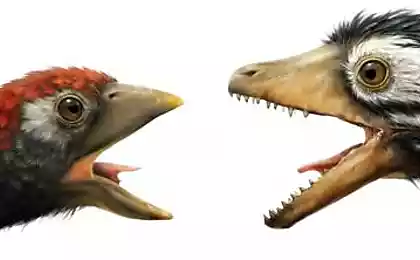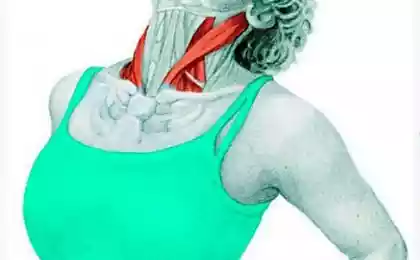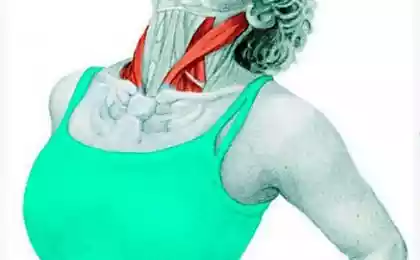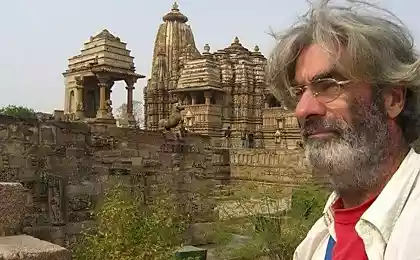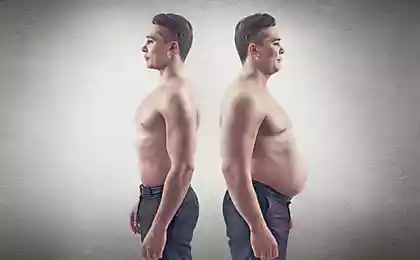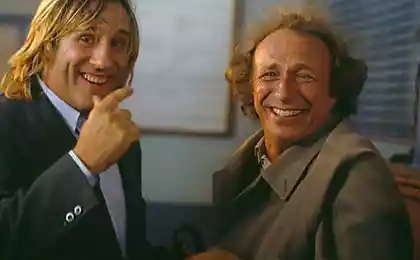487
90% of disorders in the musculoskeletal system have a visceral component
According to French osteopath Jean-Pierre Barras, the founder of visceral manipulation, up to 90% of musculoskeletal problems have a visceral component.
To understand why this is so, let's look at some key aspects of the structure of our body. All ligaments, tendons, fascia and other connective tissue formation form a single continuous system. They form a three-dimensional design of our body, and make up 20% of its mass. In General, the connective-tissue elements provide support and spatial separation of systems and individual organs in the body.

Most people believe that the shape of our body is supported by bones. But if you remove the muscle and connective tissue structures, the skeleton just turn into a pile of bones. The bones really are the stiffeners of the working structures of our body, as well as places of attachment of muscles and fascia.
Dice is pushing the boundaries of our body, and myofascial elements to hold them together, help to maintain the correct position of the bones relative to each other, allowing or, on the contrary, where necessary, limiting the degree of freedom of movement. All major organs and systems of the body, whether bone, muscle, nervous, circulatory, digestive system, covered in connective tissue sheaths.
Characteristics of healthy connective tissue are flexibility, elasticity, length and resilience. This fabric absorbs stress loads, responds to injury, surgery, illness, emotional trauma, and everyday, every second, the effect of gravity. Any of these factors is capable immediately or after a certain time to cause an imbalance in the system of connective tissue.
This imbalance is manifested by shortening, thickening, dehydration of the tissues, which leads to impaired function of the muscles, restriction of joint mobility, change of conditions of functioning of the organs. Usually these changes are manifested by pain, reduced flexibility, violation of movements, and other inconveniences and limitations of functional activity of very different kinds. Due to the peculiarities of the nature of connective tissue, no distortion or imbalance can not remain localized.
Therefore, the initial cause of the pain or dysfunction may be located at a significant distance from the site of persistence of symptoms. Therefore, a correction in any field is able to positively affect change in other parts of the body.
Super-highway with two-way traffic
Jean-Pierre Barral added to the vision of the picture of our body detailed understanding of the role of connective tissue as a system to support internal (visceral) organs.
Long been known that the pathology of the musculoskeletal dysfunction of the spine can disrupt the functioning of internal organs due to changes in the flow of signals through nerves. Barral compared the relationship between the impairments in the musculoskeletal system and organs with the super-freeway with two-way traffic.
And the most important point is that the traffic coming from the bodies (and their supporting structures) musculo-skeletal system is much greater than the traffic in the opposite direction. All the internal organs are connected more or less straight lines from the spine due to the support of their shells.
Integrative approach to evaluation and treatment of any pathology of the musculoskeletal system requires assessment of the structural relationships between the internal organs and their fascia or ligamentary attachments to the structures of the musculoskeletal system. As the musculoskeletal system, internal organs also move in three planes. This ligamentina and fascial support system attaches them to the back wall of the body.
In the presence of the tension of the ligament or fascia to reveal the tension and compensation in the rear part of the body and throughout its duration. Having a rich innervation as a whole, supporting the membrane bodies is poor in nociceptors (nerve endings signaling pain). We rarely recognize the existence of problems in the body or near it until then, until the muscles will lose the ability to compensate for this problem, and in the skeletal-muscular system do not appear constraint (restriction), and pain.
Soft manipulation of the support apparatus of the inner body can improve the function of the body. Simultaneously, the stretching of the visceral support membranes can be a key component in the treatment of musculoskeletal disorders. In orthopaedic education many physiotherapists focus is on understanding how structure, located behind the spine influence the mobility of the spine and its function in the whole.
Visceral manipulation offers an approach to the assessment and correction of changes in these structures, the position of which is at the front of the spine. Among the anatomical structures that can affect the spine include the organs and their fascial attachment, the peritoneum, greater omentum and the blood vessels. Gail Wetzler, physical therapist, clinical Director of the Institute Barrale, describes visceral manipulation as “organ-specific fascial mobilization”.
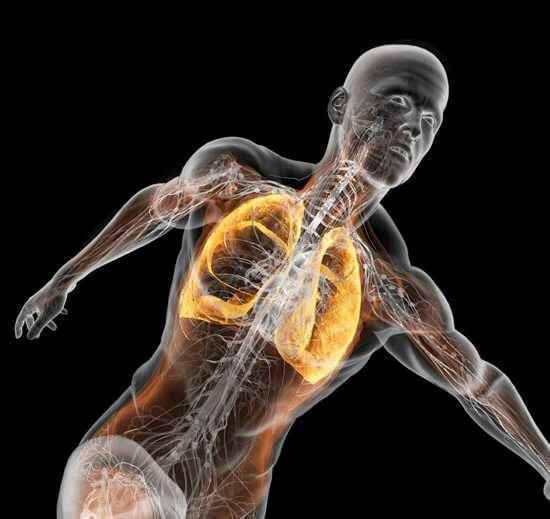
Lungs and skeletal and muscular disorders
Lungs are surrounded by two layers of pleural membranes. The pleura presents closely associated with internal organs and fascial sheets. Internal or visceral pleura forms the lung surface. Outer layer (parietal pleura) lines the inner surface of the thoracic cavity. At the apex of the lung the parietal pleura is held by the complex membrane (support membrane of the lung), starting from the middle scalenus and transverse processes of C1 – C3 vertebrae.
Pneumonia and other respiratory diseases can trigger the formation of scar tissue and adhesions in the region of these support shells. Pneumonia can leave scarring of the pleura. Excessive strained coughing can cause rib fractures. Some of us endured certain injuries to the thorax. Pleural adhesions and contractures are accumulated throughout life without our knowledge.
A day a man performs approximately 20,000 breaths. In the presence of pleural adhesions these 20 000 respiratory movements will be performed in the system with impaired balance, which prompts the body to make movement around the area of limitation/restriction (area of adhesions). Because the lungs "suspended" for the cervical spine, it has a significant effect on the neck. Paraspinal cervical muscles becomes stiff, which helps it to withstand the pull force coming from the area of the restriction.
Pleural contracture lead to a change in the position of the cervical vertebrae and restrict their movements. Because the sensory apparatus in the pleura is poorly developed, people do not feel the tension around the lungs. The patient comes with complaints of chronic stiffness in the neck. Restoration of mobility of the pleura often quickly resolves the tension in the cervical spine and improves the position of the head.
In addition, these tension negatively affect scalene muscle, which can komprimerat the brachial plexus and vessels. Pleural pull on the middle scalene muscle usually causes compression of the nerves that Innervate the upper limb, and the brush in particular. A history of severe respiratory illness is a known risk factor of carpal tunnel syndrome and other chronic microtrauma to the ligaments caused by strain.

Heart and skeletal and muscular disorders
The heart is surrounded by layers of pericardial membranes, the outer of which is held by ligaments that attach it to the rear surface of the sternum, most strongly at the level of the third and fourth ribs. The rear surface of the heart is attached to the vertebrae C4 – T4. While "whiplash injury" occurs by sudden displacement of the heart in the form of acceleration/deceleration, which leads to damage of the supporting ligaments.
Because these ligaments do not have nociceptors, clinically we do not see them from damage. In the recovery period of damaged shell fibrosisa, causing tension, aimed at the lower cervical and upper thoracic vertebrae. This is the main reason why the deterioration in the neck usually occurs a few weeks after a whiplash injury, but not immediately after it.
This also explains why the work on the painful areas of the neck often accompanied by a short effect. Visceral manipulation restores the length and elasticity of the pericardial support ligaments, facilitating, pain in the cervical and thoracic vertebrae after a whiplash injury.
As we have seen, the shell that supports the internal organs have multiple extensive connections with the rest of the supporting structure. Manipulations on the visceral system have a profound and lasting effect on the entire body. Effects on the visceral system in the treatment of diseases of the musculoskeletal system will significantly increase efficiency and improve long-term results of therapy in your patients.
ADDITIONAL LINKS
Visceral manipulation, or organ-specific fascial mobilization, focused on dysfunction within the cylinder body. Each organ has a relationship through its fascia with the spine.
Here are just a few examples of such relationships:
Subliminal program: How do people create disease
Michael Grothaus: As a rejection of the sugar has changed my life
Source: ikpk.su/publications/kraniocakralnaya-terapiy/90-narushenij-v-skeletno-myshechnoj-sisteme.html
To understand why this is so, let's look at some key aspects of the structure of our body. All ligaments, tendons, fascia and other connective tissue formation form a single continuous system. They form a three-dimensional design of our body, and make up 20% of its mass. In General, the connective-tissue elements provide support and spatial separation of systems and individual organs in the body.

Most people believe that the shape of our body is supported by bones. But if you remove the muscle and connective tissue structures, the skeleton just turn into a pile of bones. The bones really are the stiffeners of the working structures of our body, as well as places of attachment of muscles and fascia.
Dice is pushing the boundaries of our body, and myofascial elements to hold them together, help to maintain the correct position of the bones relative to each other, allowing or, on the contrary, where necessary, limiting the degree of freedom of movement. All major organs and systems of the body, whether bone, muscle, nervous, circulatory, digestive system, covered in connective tissue sheaths.
Characteristics of healthy connective tissue are flexibility, elasticity, length and resilience. This fabric absorbs stress loads, responds to injury, surgery, illness, emotional trauma, and everyday, every second, the effect of gravity. Any of these factors is capable immediately or after a certain time to cause an imbalance in the system of connective tissue.
This imbalance is manifested by shortening, thickening, dehydration of the tissues, which leads to impaired function of the muscles, restriction of joint mobility, change of conditions of functioning of the organs. Usually these changes are manifested by pain, reduced flexibility, violation of movements, and other inconveniences and limitations of functional activity of very different kinds. Due to the peculiarities of the nature of connective tissue, no distortion or imbalance can not remain localized.
Therefore, the initial cause of the pain or dysfunction may be located at a significant distance from the site of persistence of symptoms. Therefore, a correction in any field is able to positively affect change in other parts of the body.
Super-highway with two-way traffic
Jean-Pierre Barral added to the vision of the picture of our body detailed understanding of the role of connective tissue as a system to support internal (visceral) organs.
Long been known that the pathology of the musculoskeletal dysfunction of the spine can disrupt the functioning of internal organs due to changes in the flow of signals through nerves. Barral compared the relationship between the impairments in the musculoskeletal system and organs with the super-freeway with two-way traffic.
And the most important point is that the traffic coming from the bodies (and their supporting structures) musculo-skeletal system is much greater than the traffic in the opposite direction. All the internal organs are connected more or less straight lines from the spine due to the support of their shells.
Integrative approach to evaluation and treatment of any pathology of the musculoskeletal system requires assessment of the structural relationships between the internal organs and their fascia or ligamentary attachments to the structures of the musculoskeletal system. As the musculoskeletal system, internal organs also move in three planes. This ligamentina and fascial support system attaches them to the back wall of the body.
In the presence of the tension of the ligament or fascia to reveal the tension and compensation in the rear part of the body and throughout its duration. Having a rich innervation as a whole, supporting the membrane bodies is poor in nociceptors (nerve endings signaling pain). We rarely recognize the existence of problems in the body or near it until then, until the muscles will lose the ability to compensate for this problem, and in the skeletal-muscular system do not appear constraint (restriction), and pain.
Soft manipulation of the support apparatus of the inner body can improve the function of the body. Simultaneously, the stretching of the visceral support membranes can be a key component in the treatment of musculoskeletal disorders. In orthopaedic education many physiotherapists focus is on understanding how structure, located behind the spine influence the mobility of the spine and its function in the whole.
Visceral manipulation offers an approach to the assessment and correction of changes in these structures, the position of which is at the front of the spine. Among the anatomical structures that can affect the spine include the organs and their fascial attachment, the peritoneum, greater omentum and the blood vessels. Gail Wetzler, physical therapist, clinical Director of the Institute Barrale, describes visceral manipulation as “organ-specific fascial mobilization”.

Lungs and skeletal and muscular disorders
Lungs are surrounded by two layers of pleural membranes. The pleura presents closely associated with internal organs and fascial sheets. Internal or visceral pleura forms the lung surface. Outer layer (parietal pleura) lines the inner surface of the thoracic cavity. At the apex of the lung the parietal pleura is held by the complex membrane (support membrane of the lung), starting from the middle scalenus and transverse processes of C1 – C3 vertebrae.
Pneumonia and other respiratory diseases can trigger the formation of scar tissue and adhesions in the region of these support shells. Pneumonia can leave scarring of the pleura. Excessive strained coughing can cause rib fractures. Some of us endured certain injuries to the thorax. Pleural adhesions and contractures are accumulated throughout life without our knowledge.
A day a man performs approximately 20,000 breaths. In the presence of pleural adhesions these 20 000 respiratory movements will be performed in the system with impaired balance, which prompts the body to make movement around the area of limitation/restriction (area of adhesions). Because the lungs "suspended" for the cervical spine, it has a significant effect on the neck. Paraspinal cervical muscles becomes stiff, which helps it to withstand the pull force coming from the area of the restriction.
Pleural contracture lead to a change in the position of the cervical vertebrae and restrict their movements. Because the sensory apparatus in the pleura is poorly developed, people do not feel the tension around the lungs. The patient comes with complaints of chronic stiffness in the neck. Restoration of mobility of the pleura often quickly resolves the tension in the cervical spine and improves the position of the head.
In addition, these tension negatively affect scalene muscle, which can komprimerat the brachial plexus and vessels. Pleural pull on the middle scalene muscle usually causes compression of the nerves that Innervate the upper limb, and the brush in particular. A history of severe respiratory illness is a known risk factor of carpal tunnel syndrome and other chronic microtrauma to the ligaments caused by strain.

Heart and skeletal and muscular disorders
The heart is surrounded by layers of pericardial membranes, the outer of which is held by ligaments that attach it to the rear surface of the sternum, most strongly at the level of the third and fourth ribs. The rear surface of the heart is attached to the vertebrae C4 – T4. While "whiplash injury" occurs by sudden displacement of the heart in the form of acceleration/deceleration, which leads to damage of the supporting ligaments.
Because these ligaments do not have nociceptors, clinically we do not see them from damage. In the recovery period of damaged shell fibrosisa, causing tension, aimed at the lower cervical and upper thoracic vertebrae. This is the main reason why the deterioration in the neck usually occurs a few weeks after a whiplash injury, but not immediately after it.
This also explains why the work on the painful areas of the neck often accompanied by a short effect. Visceral manipulation restores the length and elasticity of the pericardial support ligaments, facilitating, pain in the cervical and thoracic vertebrae after a whiplash injury.
As we have seen, the shell that supports the internal organs have multiple extensive connections with the rest of the supporting structure. Manipulations on the visceral system have a profound and lasting effect on the entire body. Effects on the visceral system in the treatment of diseases of the musculoskeletal system will significantly increase efficiency and improve long-term results of therapy in your patients.
ADDITIONAL LINKS
Visceral manipulation, or organ-specific fascial mobilization, focused on dysfunction within the cylinder body. Each organ has a relationship through its fascia with the spine.
Here are just a few examples of such relationships:
- the root of the mesentery of the small intestine can limit the mobility of the spine at the level of third or fourth lumbar vertebrae;
- a mechanical restriction at the first lumbar vertebra can be formed in the result of persistent irritati from the rumen after appendectomy due to the activation of the autonomic nervous system;
- cecum/Appendix and L1 vertebrae have a common viscero-somatic relationship;
Subliminal program: How do people create disease
Michael Grothaus: As a rejection of the sugar has changed my life
- the decrease of flexibility of the fascial connections between the bladder and the femoral head may limit the mobility of each of these structures;
- chronic dysfunction of the right and left sacroiliac joint can lead to reduced mobility, the blind and the sigmoid colon, respectively.published
Source: ikpk.su/publications/kraniocakralnaya-terapiy/90-narushenij-v-skeletno-myshechnoj-sisteme.html

